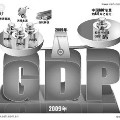This article provides a curated review of selected papers published in prominent economics journals that use machine learning (ML) tools for research and policy analysis. The review focuses on three key questions: (1) when ML is used in economics, (2) what ML models are commonly preferred, and (3) how they are used for economic applications. The review highlights that ML is particularly used in processing nontraditional and unstructured data, capturing strong nonlinearity, and improving prediction accuracy. Deep learning models are suitable for nontraditional data, whereas ensemble learning models are preferred for traditional datasets. While traditional econometric models may suffice for analyzing low-complexity data, the increasing complexity of economic data due to rapid digitalization and the growing literature suggest that ML is becoming an essential addition to the econometrician's toolbox.
翻译:本文提供了一篇筛选过的综述,介绍了发表在知名经济期刊上使用机器学习(Machine Learning, ML)工具进行研究和政策分析的选定论文。此综述聚焦于三个主要问题:(1)何时在经济学中使用机器学习,(2)常用的机器学习模型是什么,(3)它们如何应用于经济学领域。综述指出,ML特别适合处理非传统和非结构化数据、捕捉强非线性性,并提高预测准确性。深度学习模型适用于非传统数据,而集成学习模型适用于传统数据集。尽管传统的计量经济模型可能足以分析低复杂度的数据,但经济数据复杂度的增加,由于快速数字化和不断增长的文献,表明机器学习正在成为计量经济学家工具箱中不可或缺的一部分。


